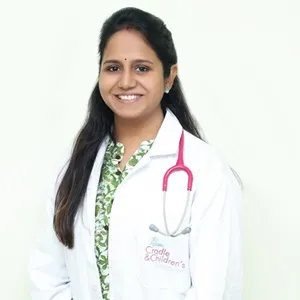What is Pediatric Orthopedics?
Pediatric orthopaedics is a branch of medicine that deals with children's muscles, joints, and bones. A pediatric orthopedist is a doctor who focuses on treating the bones, joints, and muscles of children, from babies to teenagers. Pediatric orthopedists, also called pediatric orthopaedic surgeons, can do surgery if needed.
Types of Syndromes in Pediatric Orthopedics
Musculoskeletal problems in children are different from those in adults. Because children's bodies are still growing, they may react very differently to an injury, infection, or deformity than an adult's body would.
Pediatric orthopaedic surgeons diagnose, treat, and take care of all kinds of musculoskeletal problems in children, such as:
- Scoliosis: When Scoliosis goes on for a long time, the backbone curves into a "C" or "S" shape. It causes shoulders to be out of place, shoulder joints to stick out, or the waistline to be off. Two to three per cent of children in school have Scoliosis. It mostly affects teenage girls and can be passed down through generations.
- Clubfoot: The term "clubfoot" describes foot problems in which your baby's foot is bent incorrectly. The foot is at a sharp angle to the ankle, like the beginning of a golf course. Clubfoot is a common congenital disability that affects a small number of babies and is a common orthopaedic problem in children. It is there from birth and can be found with an ultrasound.
- Hip Dysplasia: Hip dysplasia is the medical term for a hip that has moved out of place. The ball of the leg bone fits into the hip joint, a bone in the body. Hip dysplasia is, in fact, a group of diseases that can cause anything from a complete dislocation of the hip to a deformed socket with a shallow ball. Hip dysplasia can be seen right from birth.
- Perths Syndrome: Perthes syndrome is a rare childhood disease that hurts the head of the femur. Blood flow to the end of the femur, where it grows, stops being enough. So the bones get weak and fall apart. The reason for this problem with the femoral head artery is still unknown. A child with Perthes disease is usually healthy, and the dead bone tissue gets new blood vessels over time.
What to Expect from a Pediatric Orthopaedic Visit
- Medical Evaluation
Parents or guardians should expect to help their child answer questions or give all the answers. In addition to asking about how long the symptoms have been going on and what they are, a pediatric orthopaedic surgeon will usually ask about the patient's birth, development, and family history.
- Physical Checkup
The exam is made to fit the child's age and the specific problem they are having. A pediatric orthopaedic surgeon sometimes has to think of creative ways to check on young patients, like watching them play, run, or handle things.
- Tests
Depending on the reason for the child's visit, the following tests could be conducted:
- X-rays, CT scans, MRI scans, or ultrasounds.
- Putting on a cast or splint
- Blood is drawn for testing in a lab.
When Should I Visit a Pediatric Orthopedist?
Pediatric orthopaedic surgeons are specialists, so most children's pediatricians will ask the parent to consult one if needed. Pediatric orthopedists treat a wide range of conditions, such as Scoliosis, bone and joint infections, broken bones, clubfoot, sports injuries, ankle or foot surgeries, spinal problems, nerve problems, limb deformities, and trouble walking or moving.
Conclusion
A lot of broken bones in kids can be fixed without surgery. Other conditions, like hip dysplasia or clubfoot, can be treated without surgery by casting and bracing. When surgery is needed, a paediatric surgeon is trained to use implants and techniques specific to a growing body, like guided growth, to fix differences in the length of limbs or deformities.
Request an appointment at Apollo Cradle, Hyderabad - Kondapur. Call 1860-500-4424 to book an appointment.
Having trouble walking and moving can be sign of bone or muscle problems. Consult a pediatric orthopedist or your paediatrician for a diagnosis.
A part of the hip has moved away from its place in Hip Dysplasia. It can easily be visible during the birth of the child.
An orthopaedist can use castings and braces for treatment. Surgery can also be done in some cases.
X-rays, CT Scans, MRIs, and blood tests can be done to perform a diagnosis.
Clubfoot syndrome can be diagnosed with an ultrasound.

 93% Patient Satisfaction Score
93% Patient Satisfaction Score





